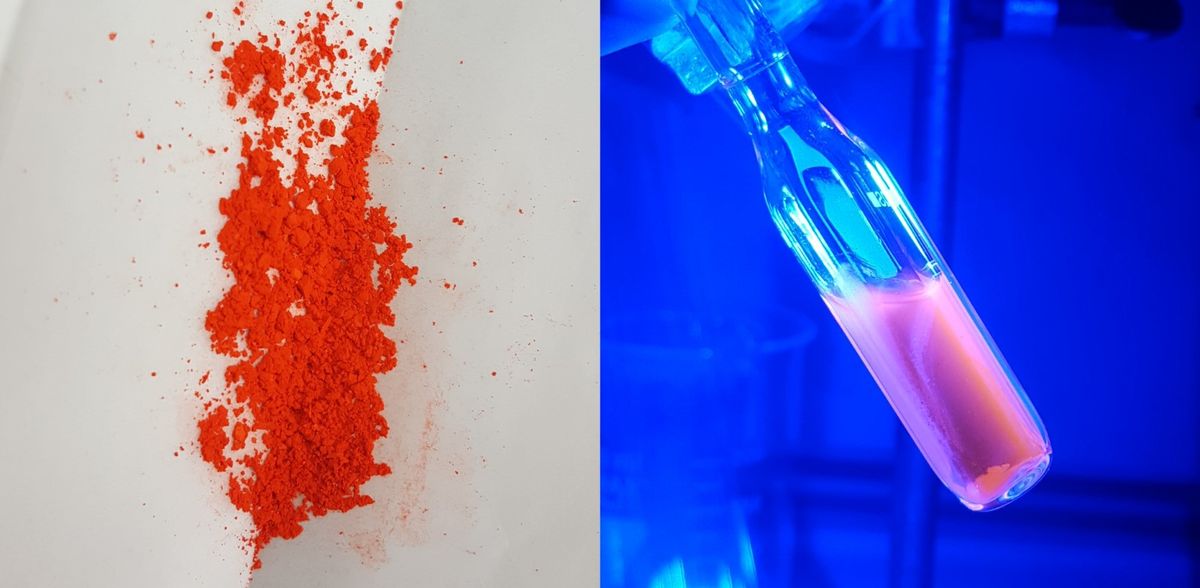Low-cost molybdenum complex paves the way for sustainable photochemistry
Scientists use molybdenum for photocatalysis and photon upconversion
Advertisement
Given the urgent need for transforming how we use and produce energy, researchers are working hard to find sustainable and cost-effective materials for light-driven chemical applications. To date, this research field heavily relies on expensive precious metal or rare-earth metal complexes with limited abundance in Earth's crust. While significant progress has been made in recent years establishing alternatives using earth-abundant elements, these materials are usually very difficult to make as it requires resource-intensive multi-step syntheses. However, a team of researchers from Johannes Gutenberg University Mainz (JGU), the University of Kaiserslautern-Landau (RPTU), and the Max Planck Institute for Polymer Research (MPIP) led by Professor Katja Heinze and her PhD student Winald Kitzmann has achieved a significant breakthrough by combining the best of both worlds: a low-cost and abundant metal, molybdenum, with a simple synthesis method. The team demonstrated the versatility of the molecule by applying it in the conversion of low-energy to high-energy light and as a photocatalyst to drive chemical reactions – two strategies which may enable us to make better use of our energy in the future.
Simple two-step synthesis process
In their paper "Stable Molybdenum(0) Carbonyl Complex for Upconversion and Photoredox Catalysis" published in the Journal of the American Chemical Society, the researchers introduce a novel approach to the design of stable photoactive complexes based on a molybdenum atom in combination with carbonyl ligands. The synthesis of this molecule is very simple and requires only two steps. "Many examples cited in research literature have fantastic properties but require months to make," said Alexander Fischer, who had joined the Heinze lab at JGU for his Master's thesis and co-authored the study. "I was amazed to see that you can synthesize the molybdenum complex in just a single day."
Using the sophisticated laser spectrometers available at JGU, MPIP, and RPTU, the team showed that the absorption of light populates an excited state in the complex which persists over several hundred nanoseconds. "This may sound short but is long enough for the excited state to be used in photochemical transformations," explained Winald Kitzmann. "In fact, the nature of this state is well known from materials based on precious metals, so we already knew how to make best use of it."
Excellent results in practical trials
Conventional carbonyl complexes are notorious for decomposing under irradiation with light, a fact that hung like a Damocles sword over the project from the beginning. However, the molybdenum complex proved to be highly photostable. "This remarkable stability of our new compound – even with high light intensities – really took us by surprise," recalled Professor Katja Heinz, leader of the research group that spearheaded the investigation. "So unlike many previous examples, the applicability of our complex is not limited by poor photostability," she added. Advanced quantum chemical calculations revealed the key reasons for this success. With this knowledge at hand, the researchers were further able to propose how these traits can be incorporated in future designed materials.
For the application of the molybdenum carbonyl material, the team targeted two applications, i.e., photon upconversion and photocatalysis. In photon upconversion, two low-energy photons are converted to one high-energy photon, a process that can in principle increase the efficiency of solar cells by expanding the used solar spectrum to low-energy light. In photocatalysis, the molybdenum complex is used to drive a chemical reaction with light, which would otherwise require harsh conditions to proceed. In both types of experiments the complex performed very well, approaching and even surpassing traditional precious metal compounds in some cases.
Collaboration as the key to success
Overall, these findings serve as a significant contribution to the field of sustainable photochemistry, offering a promising pathway for the development of low-cost materials with useful photoactivity. "Collaboration played a vital role for the success of this project," concluded Professor Katja Heinze. "Only by pooling our expertise and resources, we were able to overcome the diverse challenges and achieve these remarkable results." The collaborative efforts of researchers from JGU, RPTU, and MPIP have not only demonstrated the feasibility of utilizing molybdenum as a cheap Earth-abundant metal but have also presented a simple design that avoids the need for complex ligands. "We are thrilled to present our findings on this photostable molybdenum carbonyl complex," said Winald Kitzmann. "And we are excited about the potential applications and future advancements that could arise from our work."
Original publication
Other news from the department science
Most read news
More news from our other portals
See the theme worlds for related content
Topic world Synthesis
Chemical synthesis is at the heart of modern chemistry and enables the targeted production of molecules with specific properties. By combining starting materials in defined reaction conditions, chemists can create a wide range of compounds, from simple molecules to complex active ingredients.

Topic world Synthesis
Chemical synthesis is at the heart of modern chemistry and enables the targeted production of molecules with specific properties. By combining starting materials in defined reaction conditions, chemists can create a wide range of compounds, from simple molecules to complex active ingredients.

























































